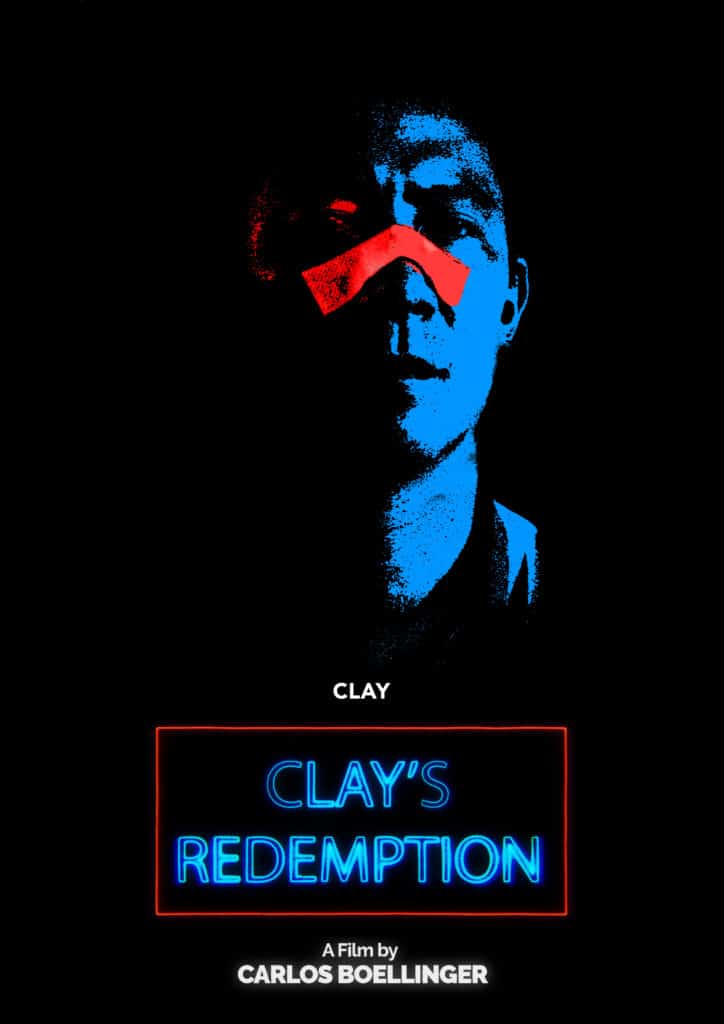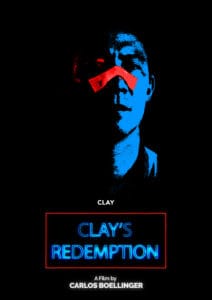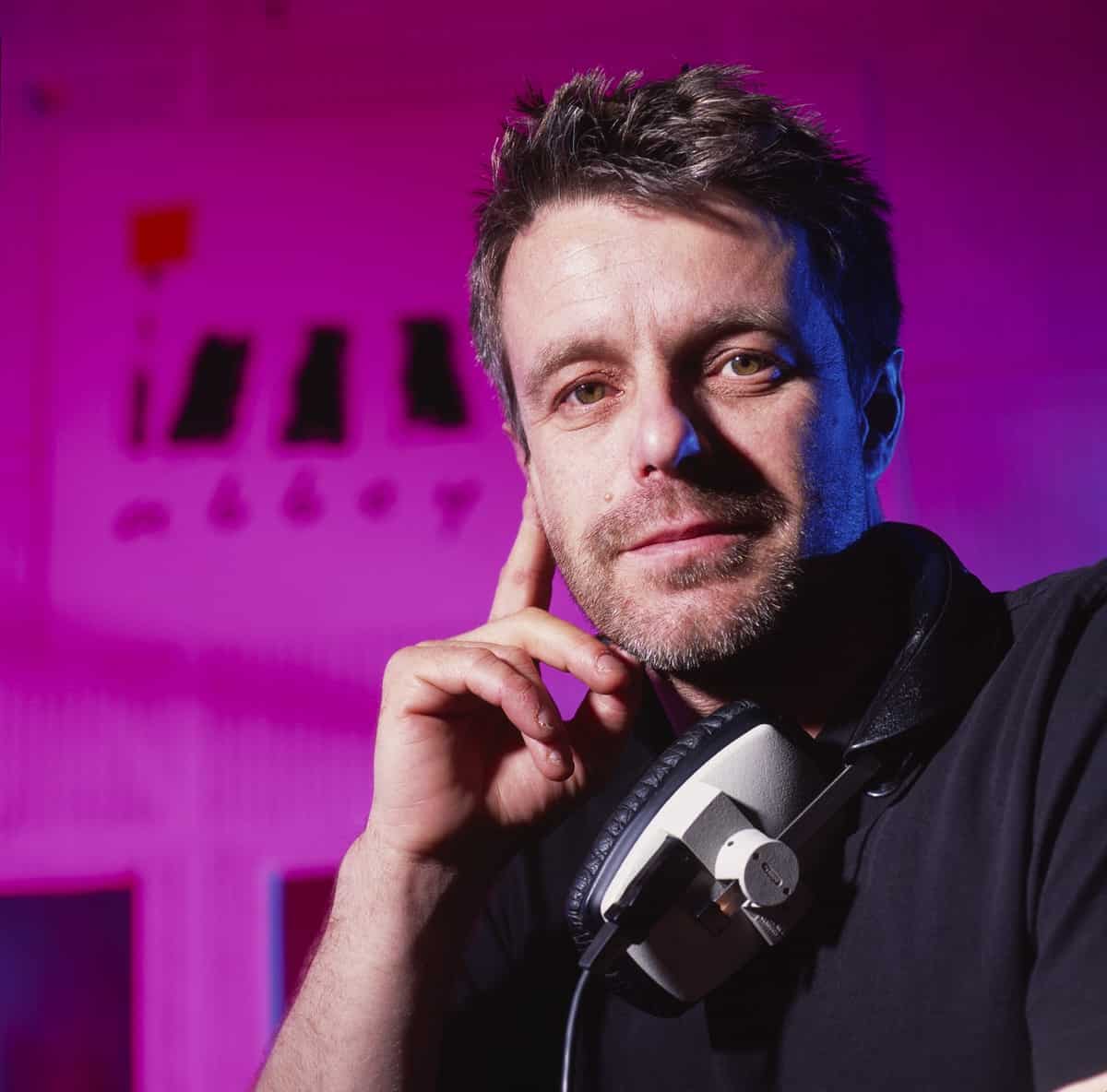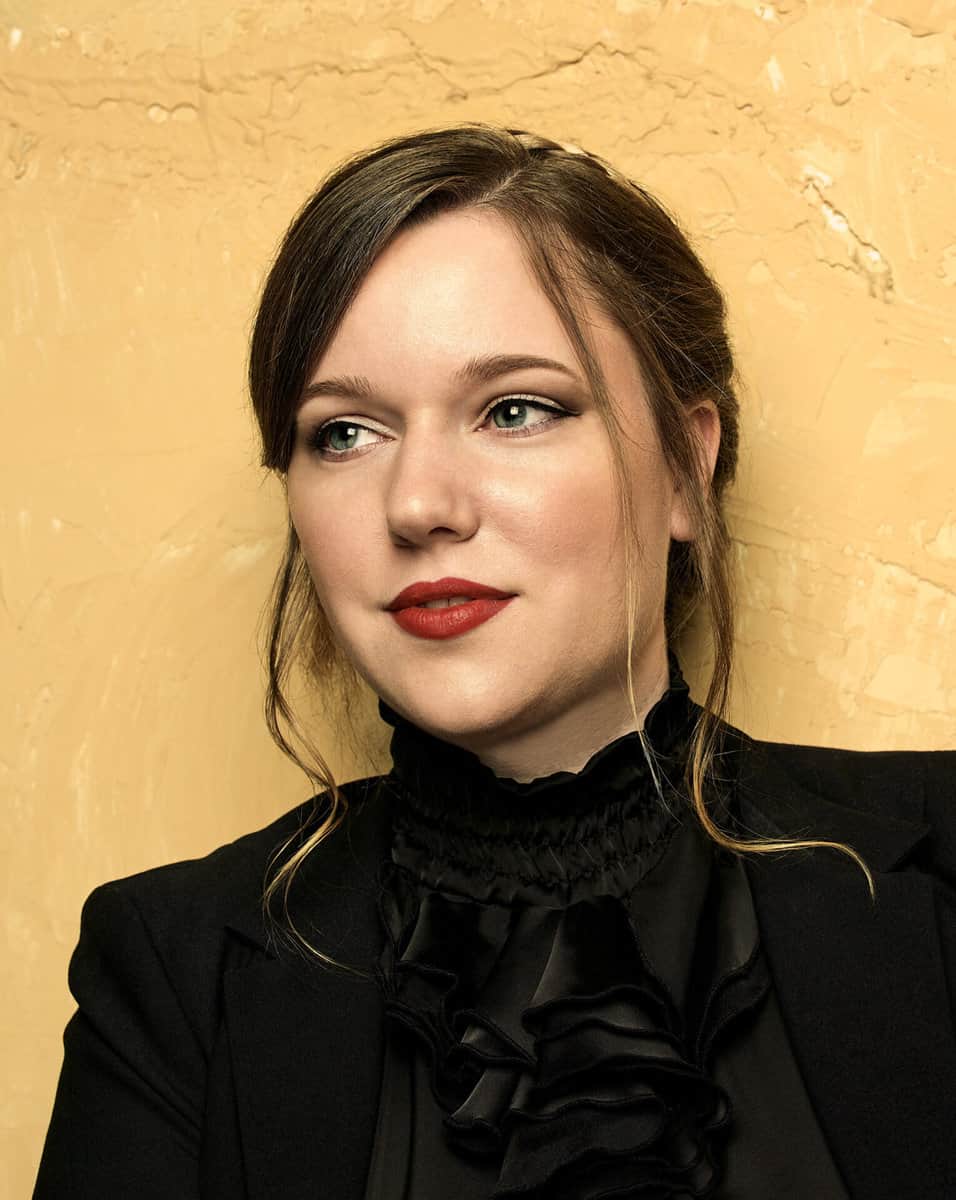
I recently had the pleasure of chatting with composer duo Two Twenty Two (comprised of Tom Nettleship and Daisy Coole). Together they’ve composed around thirty short and feature films over the last several years, ranging from hard dramas to sci-fi and everything in between. Their most recent score is for the feature Clay’s Redemption, a mythology-injected, neon filled noir. The following write-up is a very small overview of what we talked about, so be sure to listen to the full audio via podcast at the bottom of the page (or visiting your favorite platform, like Spotify or Apple Podcasts) or by video (you can also read my review of their score to the short film Home by 8:30 here)!
Though I didn’t have a chance to watch Clay’s Redemption ahead of our chat, I listened to their score a few times. Its eclectic nature makes it hard to describe, but they mix chaotic, gritty synth and electronic elements with calmer jazz interludes, all led by a powerful, trudging theme for Clay, the film’s protagonist. After finally watching the film, the wild genre mix makes sense: Clay is an enforcer for the gods, moving between bodies to serve their whims. He takes one final job before he can be freed of his servitude, but gods, demons, and titans stand in his way. All of this is set against a dark, seedy urban environment, adding a modern noir feel.
Diving Into Clay’s Redemption
After a fair bit of chatting we dove into Clay’s Redemption. They decided to lean directly into the style and madness of the film. The idea was simple: take risks to create something fitting for the film rather than play it safe. Tom summed up their approach nicely, saying they’re “not too keen on homogeny.” They appreciate adventurous creators, even when they might not like the final product – the willingness to take risk is a trait they applaud.
This unconventional approach is immediately apparent in their score for Clay’s Redemption. During our talk, I described the score as a dark “synthy electronic palette” used in a rather tumultuous way. Though the film is filled with neon-soaked shots, they wanted to avoid a straightforward synth-based score. Instead, they introduced “as many rough edges and grain as possible” and avoid using “in the box sounds for everything.” To do so, they started with what they call “saxophone madness.”
Daisy said she first “recorded a couple of nice melodies [on her tenor sax] that might be themes and then loads of weird sounds, everything I was never taught to play on the saxophone when I was a kid: clicks, and overtones, and harsh, horrible noises. From that we manipulated them and created new sounds.” They then moved to unorthodox approaches on piano and strings, creating a bank of bizarre organic sounds from which they could work. This explained why some of the score’s sounds were hard to place: I would not have guessed that they came from manipulations of saxophone.
It made for an interesting homage to older noir films. Clay’s Redemption is, at times, a pure neo-noir, with the score using pure, unaltered saxophone in a more traditional way. But when the film moves from noir into stranger territories, so too does their score, keeping those saxophone roots but using the instrument in almost unrecognizable ways. It was a clever move that, unfortunately, is also easy for the viewer/listener to overlook. They described the score as almost a mix between modern chaotic synth and Bernard Herrmann.
Their completely out-of-the-box approach can largely be attributed to their relationship with director Carlos Boellinger, which whom they’ve worked on several short films. Clay’s Redemption is Boellinger’s first feature but, given his trust in Daisy and Tom, he told them “go big or go home and then gave [them] free reign” over the score. Though this level of trust is uncommon, it worked wonders here, leading to an excellent, unique score.
Clay’s Redemption releases in November and their score is available on all major streaming services. Read more about Two Twenty Two on their website.



